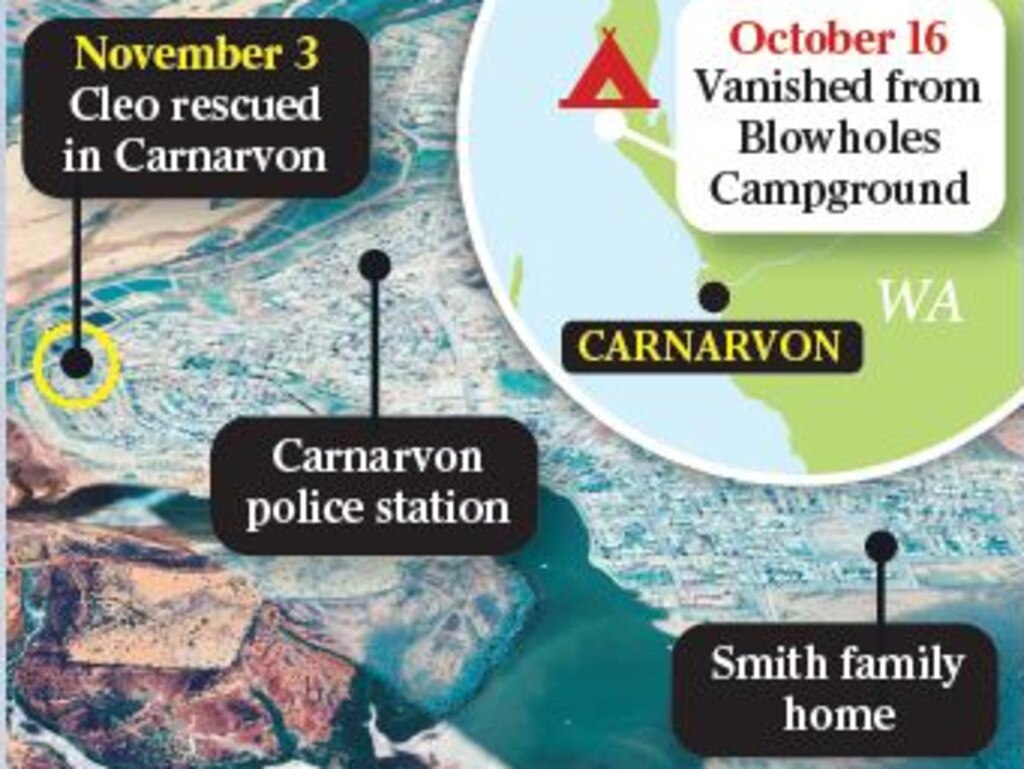Dogged expertise cracked the Cleo Smith case
The search for Cleo Smith was one of the most well-resourced missing persons investigations in Australian history, drawing in federal agencies and more than 140 police.

The search for Cleo Smith was one of the most well-resourced missing persons investigations in Australian history, drawing in federal agencies and more than 140 police.
While intelligence agencies helped analyse large volumes of data from across the vast Gascoyne region where Cleo vanished on October 16, 20 police recruits sifted through 50cu m of rubbish from roadside bins on a 650km stretch of highways and lesser roads.
Within two days of her disappearance, police had interviewed and accounted for the movements of every known sex offender in and near the fruit-growing town of Carnarvon, where Cleo lives with her mother, Ellie Smith, her stepfather, Jake Gliddon, and her baby sister, Isla. They said that was about 20 people.
It took investigators longer to identify everyone who had been at the Blowholes Campground when Cleo was snatched from the family tent. The seaside campground, 70km by road north of Carnarvon, is big and bookings are not necessary. For two weeks, police had to work hard to pin down who was in the area at the relevant times.
The homicide squad was dispatched to Carnarvon within hours of Ms Smith’s distressed call to police at 6.23am on October 16.
The land, sea and air search of the area involved police on horseback, volunteers on foot and Australian Defence Force drones.
That arm of the investigation was scaled down, then ceased on the sixth day. Police were not saying so but they were now sure Cleo was not in the area and this was a kidnapping.
There were some obvious early signs that Cleo had not wandered off. Her sleeping bag was missing. When Ms Smith woke in the family tent to find her gone about 6am on October 16, the tent flap closest to the mattress where Cleo had been sleeping next to Isla’s cot was open to a height she could not have reached.
Campers said they heard skidding tyres about 3am, 90 minutes after Ms Smith gave Cleo a drink of water and sent her back to bed.
On the eighth day, police revealed motorists had reported seeing a car driving away from the blowholes and turning south towards Carnarvon between 3am and 3.30am on October 16.
Detective in charge Rod Wilde confirmed data from mobile phone towers and CCTV footage was key to the investigation.
Despite the McGowan government’s swift offer of a $1m reward on the sixth day of the search, Mr Wilde said it was not a single tip-off that led to the decision to raid the house where Cleo was found.
The man in police custody on Wednesday became a suspect only on Tuesday, he said.
“You would have seen officers going around to every CCTV location within 1000km of Carnarvon – that’s the level of detail you go to … for what we’re looking for,” Mr Wilde said. “It was the hard work of the team that did it, analysing all that information, gathering it, working through it, finding that needle in that haystack.”
“It’s a methodical investigation. We had to gather all this information, all this evidence, put it all together … It’s a matter of piecing it out through working out who was where.”






